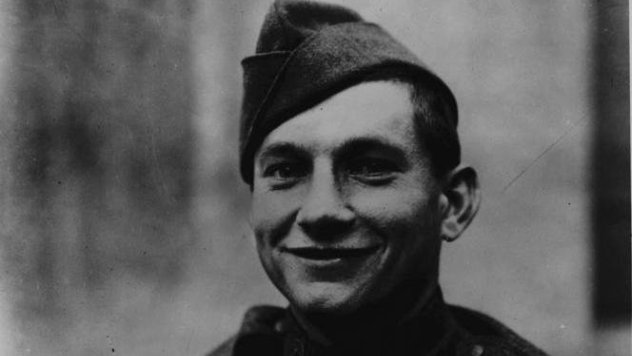The first American POW to escape during WWI was a Polish immigrant named Frank Savicki. His is an extraordinary tale of bravery and a prime example of what the human body and mind can do when placed under extreme duress. After being captured in France in 1918, Savicki was transported to Germany where he endured terrible conditions. One night, he used his cunning to fool his guards before running, crawling and even vaulting his way to freedom.
Citizenship & War
Savicki was born in the town of Gaj, Poland in 1894. Along with his older sister Anna, he arrived at Ellis Island, New York in 1910. The Savickis were among the massive influx of immigrants from Eastern Europe that came to America in the 40-year period before WWI. They moved to Shenandoah, Pennsylvania to live with their uncle. As was the case with most kids his age at that time, Savicki worked as a mule driver before working in the coal mines starting at the age of 16.
He began the long process of becoming a citizen in 1914 and was finally naturalized in December 1916. America entered the war in April 1917 and Savicki enlisted in the A.E.F. a couple of weeks later; he was keen to serve his new country and became a member of the Pennsylvanian National Guard. The 28th Division was nicknamed the Iron Division due to its endurance, and they fought in six important campaigns during the war.

Savicki was part of C Company, and along with B Company, they were located between the towns of Chateau Thierry and Marne, France in July 1917. He was a liaison between the two groups, and the plan was for B Company to proceed to Marne to keep contact with the enemy while C Company followed. When B Company ran into the Germans, a skirmish took place, and Savicki passed the signal back to his group. However, he was cut off from both groups along with two other men. Sadly, they both died, and Savicki was captured after trying to hide in a shell hole.
After a brief interrogation, the Germans put Savicki in a locked room in a farmhouse. He stayed there with no food or water for two days before being transported to a prison camp in Laon. The exhausted, dehydrated, and hungry soldier was thrown in a barracks along with hundreds of captured troops. It was a desperately grim situation; the men were surrounded by a barbed-wire fence and forced to work 13-14 hours a day, seven days a week.
Savicki recalled the terrible conditions the POWs had to endure. Rations consisted of less than 200 grams of bread a day, a drink that was allegedly coffee, and a soup made from grass and a tiny amount of horsemeat. The men slept on a barn floor with no blankets, no change of clothes and no way of bathing. In the six weeks, he spent at Laon, Savicki never took his clothes off, and the men were covered in lice.

